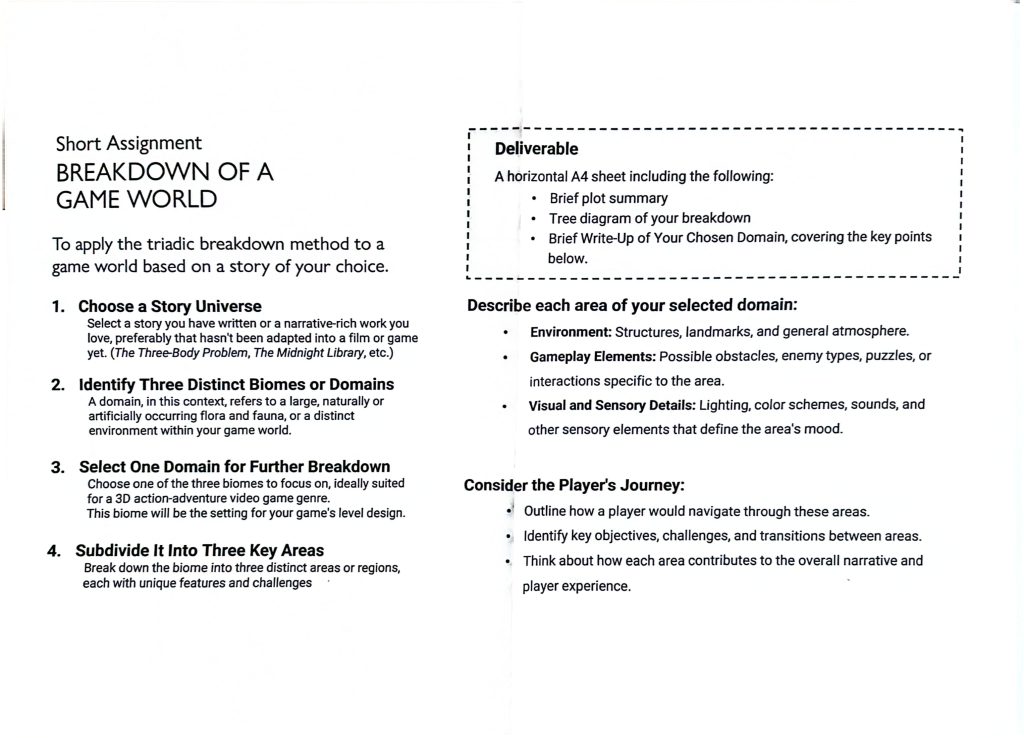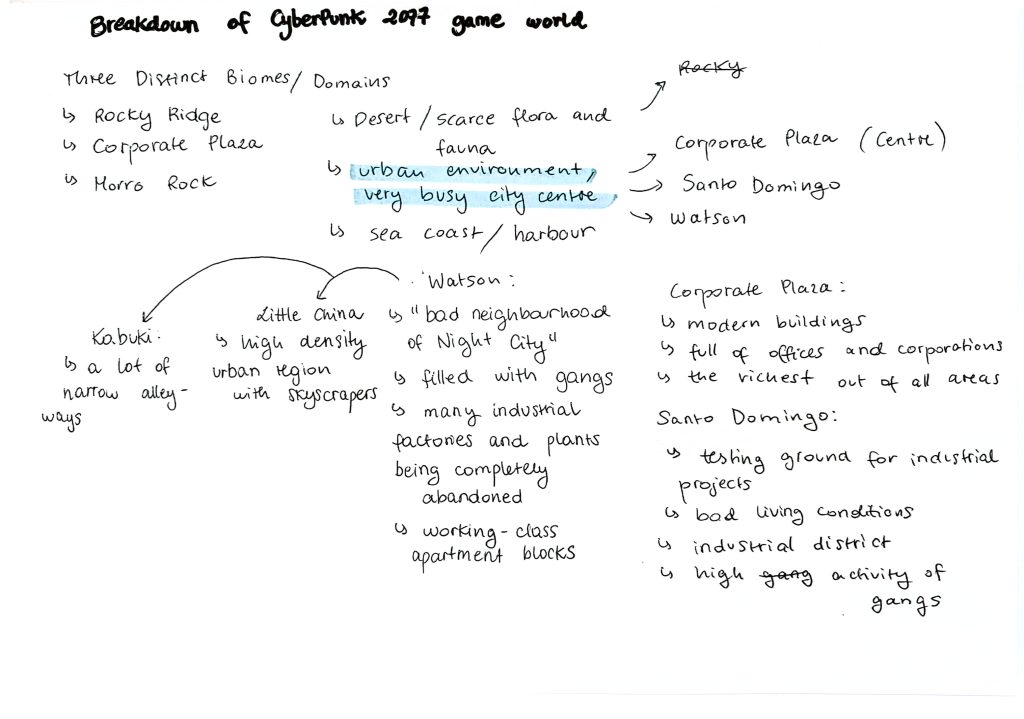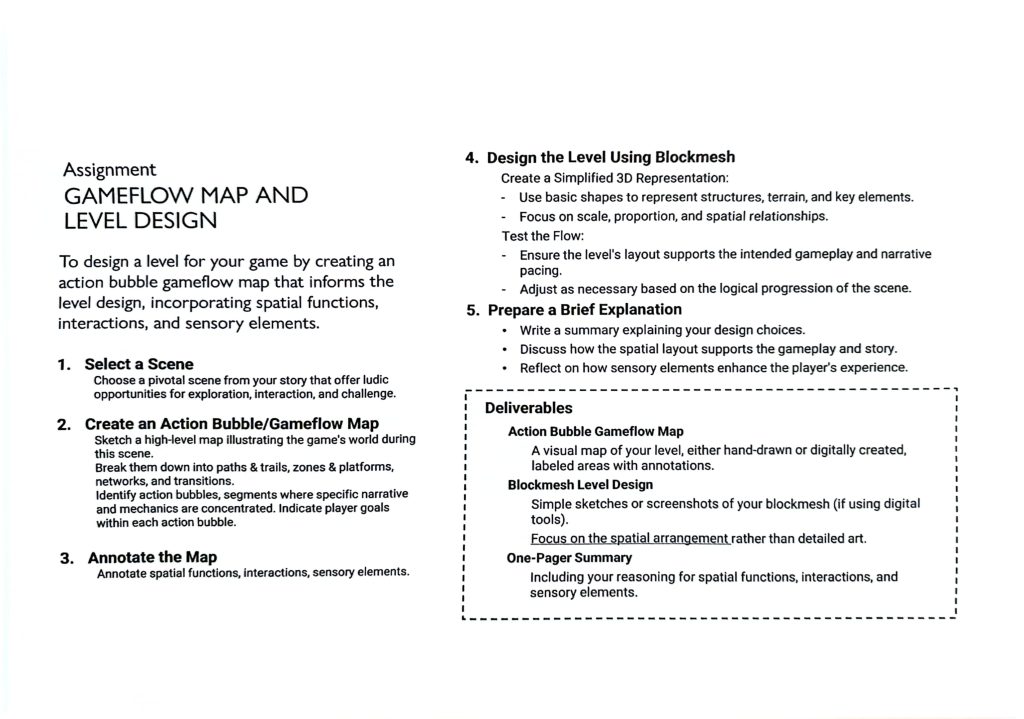Second week was generally focused on spaces and building gameworlds. A gameworld is a world representation designed with a particular gameplay in mind and characterized by game-system information that enables meaningful player interaction (Jorgensen, 2013). To help us in creating our own gameworlds we started with an exercise where we were supposed to fill in a ready template with chosen prompts from each section. We did the task in pairs so that the creative process would be even more effective and I’m quite satisfied with the final result. It is something I will definitely look back to when creating the gameworld for my main project.
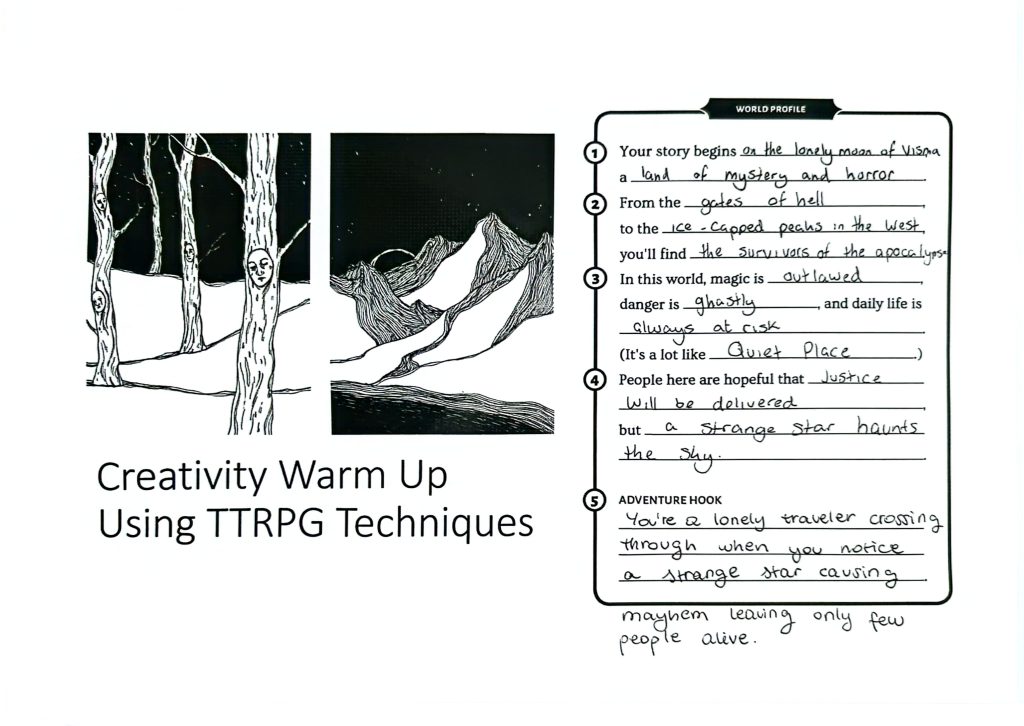
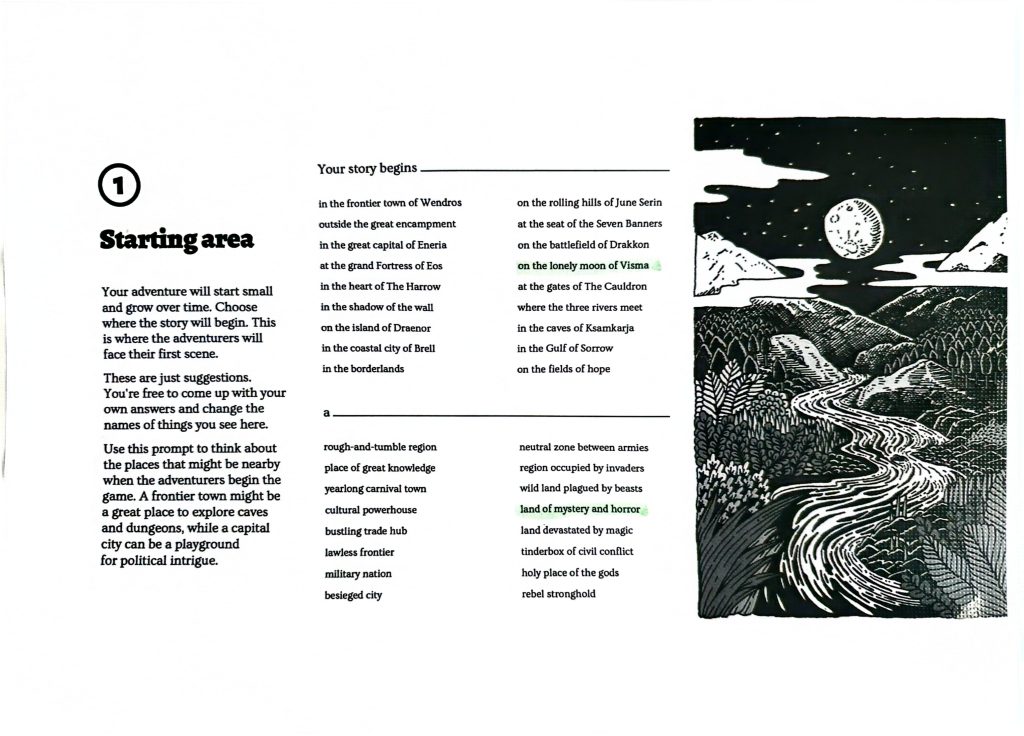
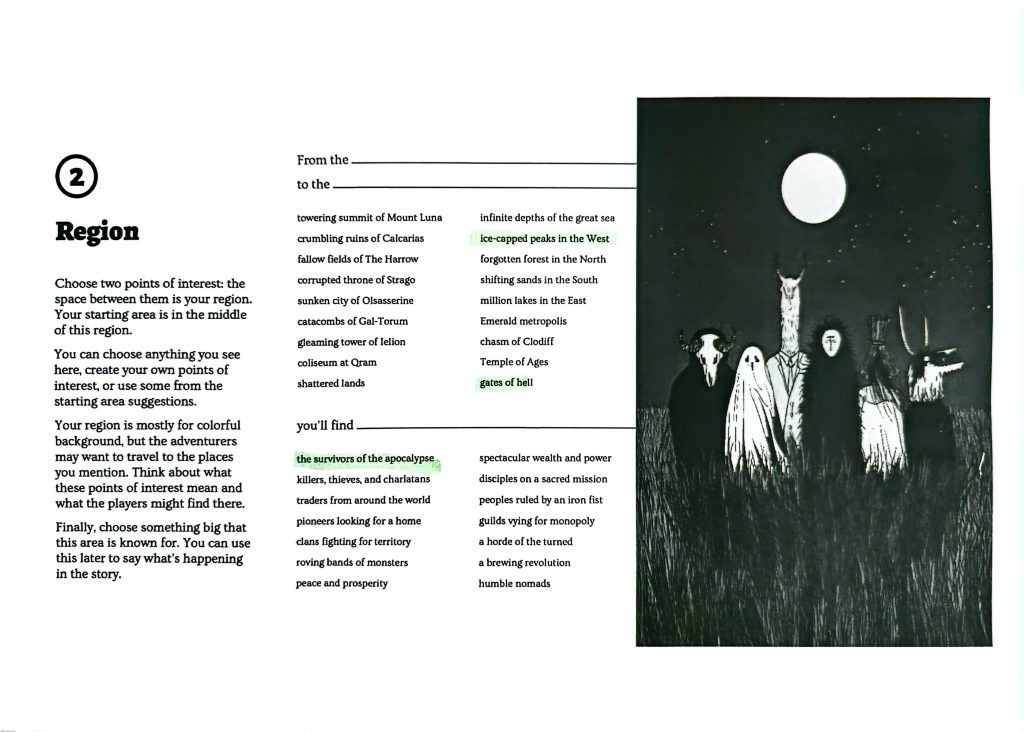
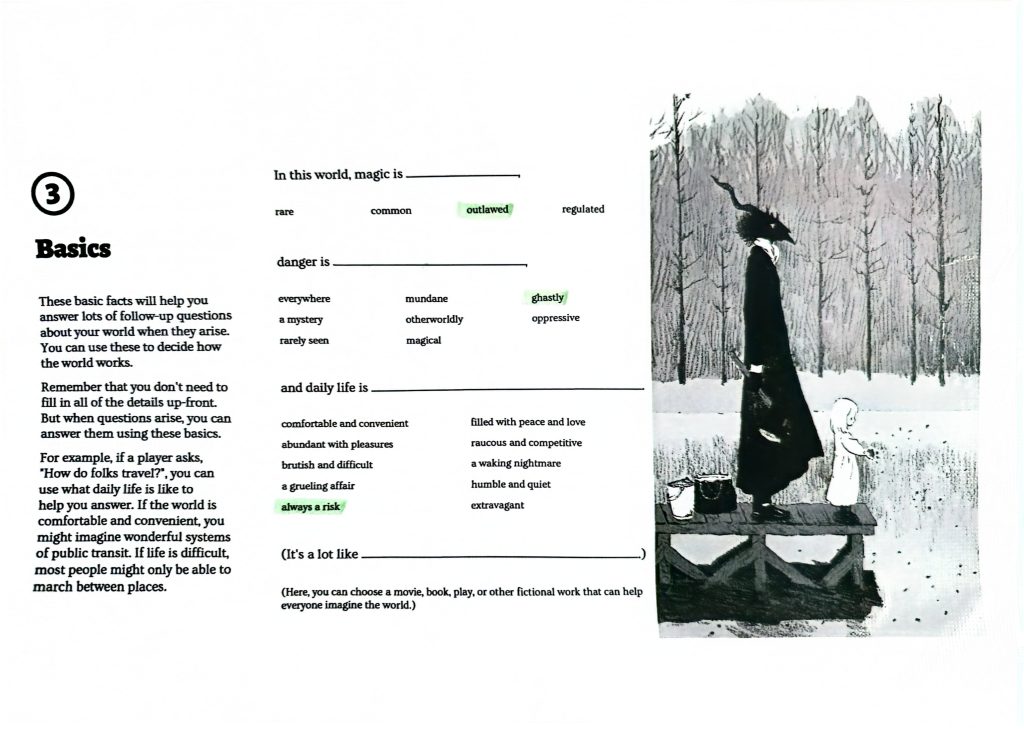
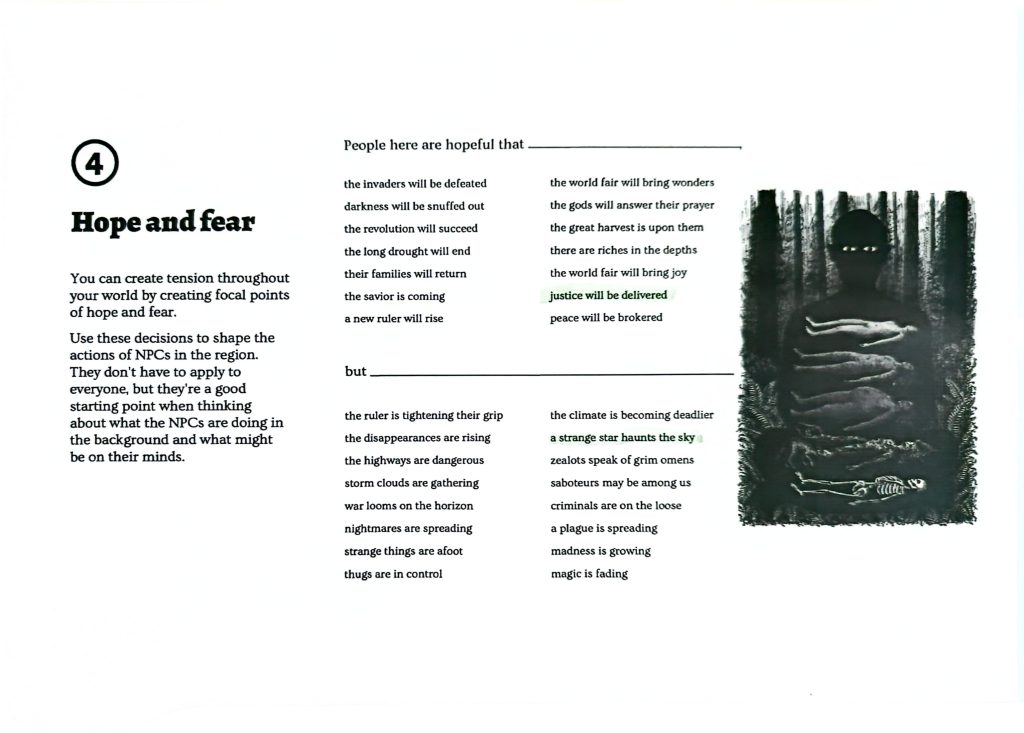
Another very useful reference material that we were given is the World Bible shown below. It contains a lot of detailed questions that facilitate the creative process for gameworld design.
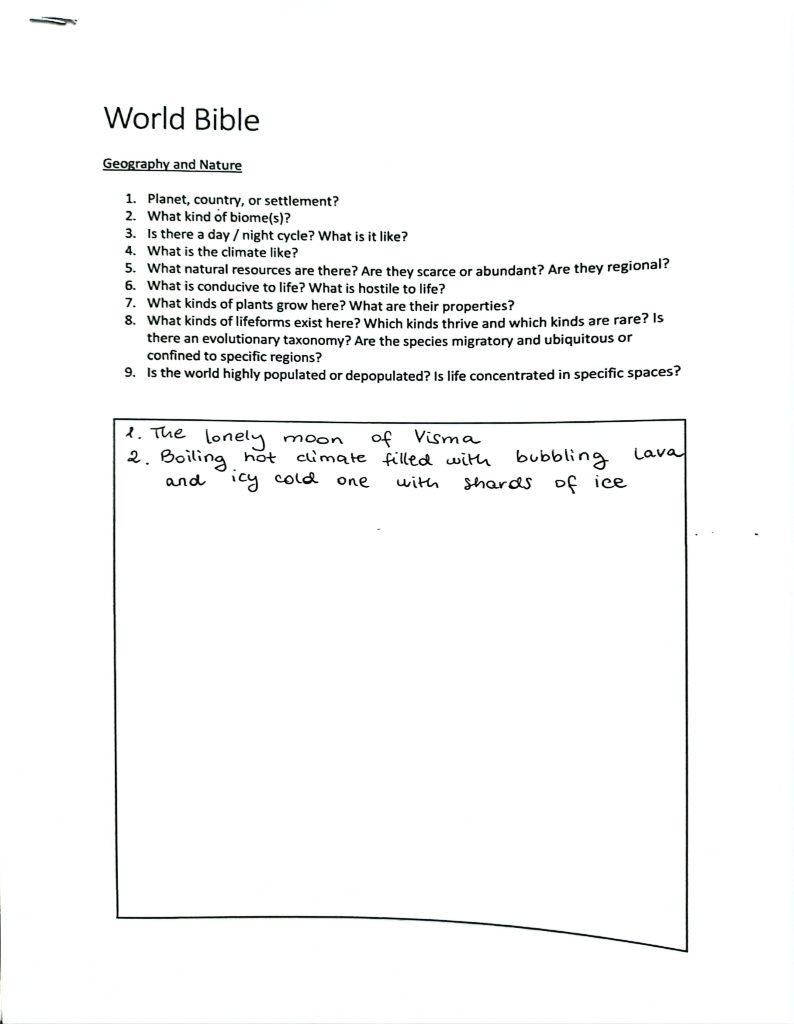
Guest Speaker: Oguz Doma on Game Spaces and World Building
On Thursday of the second week we’ve had a guest speaker – Oguz Doma – who explained in detail the role of space design in games and how to build them in a way that would feel immersive to the player whilst providing essential information to progress through the game.
- How to define “play” activity?
It is something a body is not obliged to do, whereas work consists of what a body is obliged to do. - Main elements of a “game“?
– challenge
– rules
– player interaction
– valued outcome - All of the acts and occurrences take place in a space, that’s why its design is essential in narrative.
- Architecture x fiction – fictive work alters the reality and presents its own version.
- Fictive Spaces vs. Video Game Spaces – what makes game spaces different from other narrative media?
– interaction
– agency
– flexible operational time in gameplay - When building realistic worlds and biomes it’s always important to use references to make the environment feel more immersive. Sticking to created biomes and considering their characteristic features in details is also essential to the experience.
During the lecture we were explained what is the breakdown of a game world and how to do it. We were to choose an already existing fictional world and break it down into smaller elements according to the instructions. I chose Cyberpunk 2077 and based on the officially released map I divided it into three biomes and then split one of them (urban environment) further into three districts (Corporate Plaza, Santo Domingo, Watson). I outlined all of the characteristic features of each area which helped me understand better what elements are needed to make a game world more immersive and believable.
